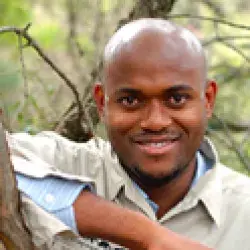The Leopard's Final Days
Sunday January 11th – Tuesday January 13th: The last days
After Saturday the collared leopard moved 10 km south towards Satara and rested near a culvert, he probably used the road for protection from other carnivores as he was heavily compromised.
He stayed on the side of the road during which time I monitored him closely. His condition deteriorated daily. On Tuesday he was at his worst condition, even in a number of disturbances including the rain, he just slept on the same spot without moving. He looked so bad that I had difficulties looking at him.
The veterinary scientists came later that afternoon to euthanize the leopard and took him back to Skukuza. There was no struggle!
Wednesday January the 14th: Post-mortem
The post-mortem on that morning suggested that the porcupine quills led to his rapid decline in condition combined with septicaemia from the quill-inflicted injuries.
A tip of one of the quills was still stuck deep into his forehead, and in addition he had several tips spread across his neck, chest, front legs and hind legs. One of the quills, the one that dealt him the most severe blow, penetrated the chest cavity and in the process collapsed the lungs. One of the lungs had a lesion, which is suspected to be of the tuberculosis family, but still has to undergo further tests. The liver also looked like it had some kind of viral hepatitis, which also needs follow-up tests. The kidneys had numerous small lesions, suggesting that they did not function properly.
All these suggested that the leopard was old and had multiple infections. I asked if the collar might have added to the leopard’s condition, but the vets said that the collar was not a problem.
Now we cannot say with confidence whether he was still in his territory or was kicked out by a younger stronger competitor. He was more than 30 km away from what we thought was his core area. This is a major set back to the project, but that is how life is here in the bush.
We take the good with the bad.
